All asset intensive organisations will have a desire to increase the value delivered from their assets. Many organisations will have a strategic approach to delivering value while others tend to be more reactive. One thing that is common however is that the approach to delivering sustained value from asset management lacks ongoing support from senior and executive leaders. This often leads to short lived changes that don’t tend to stick.
What can be done to change this? How might we go about selling the vision for asset management and engaging the senior and executive level leadership so that they provide ongoing support?
Let’s explore six key considerations to be undertaken when you are looking to get support for your asset management initiatives.
1. Take a strategic approach.
The first consideration on the path to selling your asset management vision is to have a strategic focus to asset management. Management is the process of dealing with or controlling things. It lacks an element of improvement. A strategic focus can be considered a plan of action designed to achieve a long term or overall aim. A strategic approach contains elements related to sustained improvement over time. How can we use a strategic approach to gain support for sustained improvement across asset management in current reactive environments where short term incentives and profits are typically the priority?
As asset management leaders, we need to realise that corporate strategy and a strategic approach to asset management are very different. Corporate strategies focus on creating competitive advantage and delivering profits. Leaders charged with delivering corporate strategies are often commercially focused so increasing market share, growing sales and profit margin is the primary focus. This is the reason we see budget cuts as the go to approach when times are tough. Budget cuts immediately deliver a boost to profit margin but at what expense and impact to assets? How might we go about changing this dynamic?
Referring to the above definitions, if we continue to manage the status quo it will be impossible to achieve continuous improvement. Having a strategic approach focused on improving the value derived from assets is important to change the reactive culture and gain buy in from senior leaders. As Sun Tzu put it in his famous text, The Art of War, “Strategy without tactics is the slowest road to victory. Tactics without strategy is the noise before defeat.”
2. Consider a model for change management.
There are many change models available, and it is highly recommended that a structured approach to change be used for the implementation of any strategy. In his famous book, Leading Change, John Kotter proposed an 8 step model for leading any change initiative.
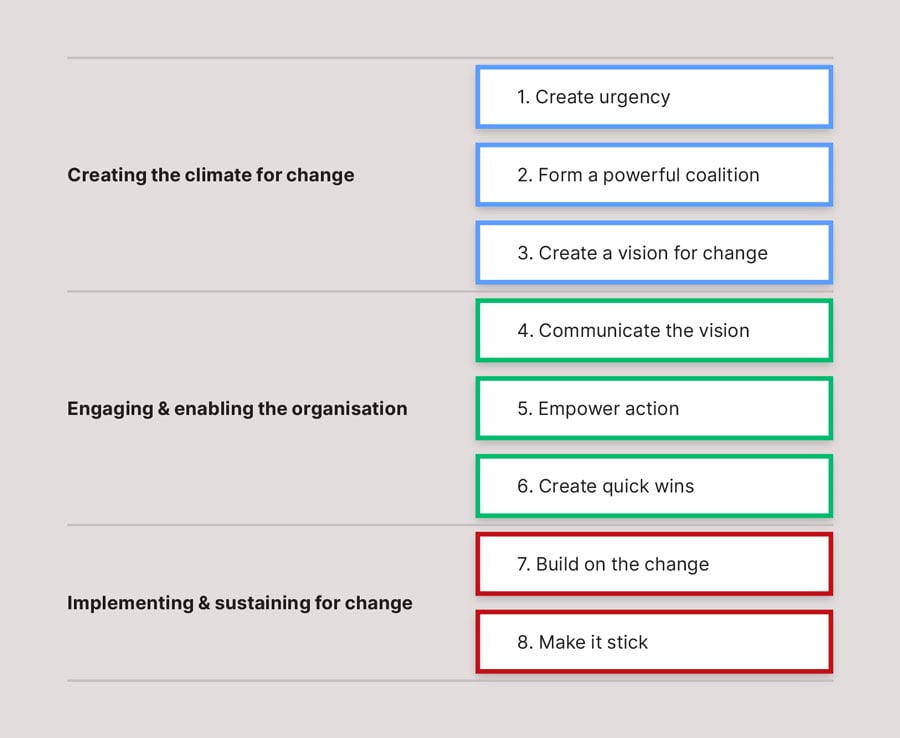
You can see from Kotter’s model that the eight steps are broken down into three phases. The first phase is around creating a climate for change. This first phase focuses on creating the platform for change and answers the question ‘What’s in it for me’ when you are looking to gain buy in from senior leaders. The second phase engages and enables the organisation. The third phase is around institutionalising and sustaining the change. The scope of this article does not cover the detail behind each of the phases or steps in the model, but for further information refer to Kotter’s book Leading Change.
3. Create a sense of urgency.
When creating a sense of urgency, it is important to understand what will gain the attention of senior leaders. It is essential that any improvement initiative be accompanied by something that highlights the commercial value. This is best represented with a business case.
The first step to developing a business case is to establish how effective the organisation is at delivering value. In the case of a strategic approach to Asset Management this would require something along the lines of a gap or benchmark assessment. Utilising the gaps identified, an organisational effectiveness model such as the McKinsey 7S framework, or a simplified version looking at the skills, structure, and systems, can be used to gauge a starting point for your strategy to understand what improvements are required.
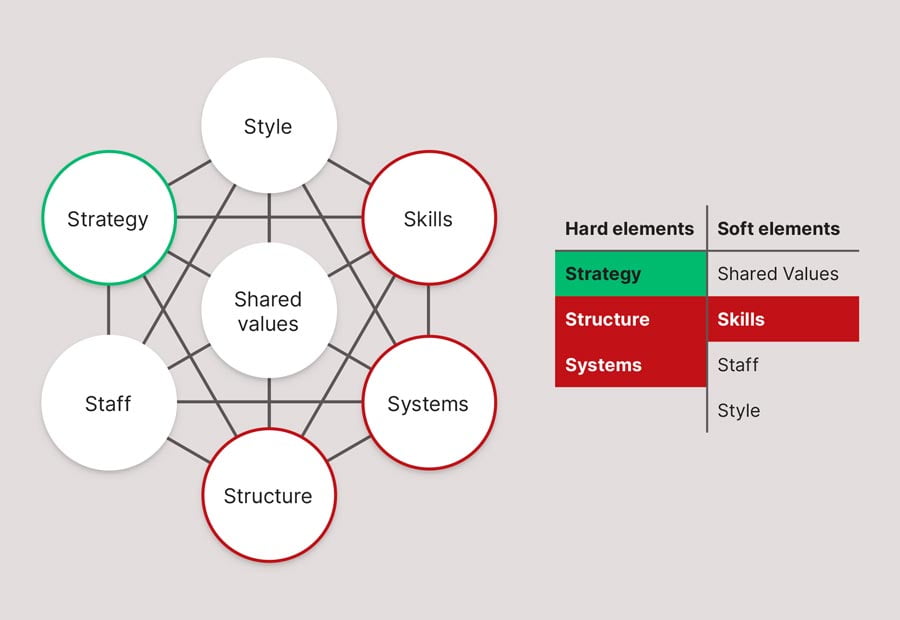
Focusing on the three elements of the framework mentioned, simple questions to ask would be:
Skills
- What are the skills required within the asset management and maintenance teams that will help deliver the improvements required to close the gaps between current and desired state?
- What training is required to lift asset management and maintenance skills to the appropriate level to be able to deliver the targeted improvements?
Structure
- Do you have the required personnel to undertake the asset management and maintenance improvements that you are looking to make?
- Are the personnel in the right positions to undertake the improvement and implement the changes?
Systems
- How well are the current systems and processes supporting asset management and maintenance improvements?
- How much do the systems need to be developed so that asset management and maintenance processes can deliver the required improvements and close the gap?
The investment for these improvements will form the cost portion of the business case. Combining the investments with the commercial benefits to the business will complete the business case. Typically, the commercial business benefits will equate from one or more of the following:
- Improved availability – leading to increased throughput and more sales or more available production time so lower labour cost due to less overtime.
- Reduced cost of maintenance – Reactive maintenance typically costs more than planned maintenance (Think of the waste associated with reactive maintenance compared to planned and the increased costs of this waste).
- An offset of capital expenditure and associated interest costs.
Once these benefits are understood they can then be forecast as cashflows into the future and combined with the required investment to create a commercial justification for the asset management improvement.
4. Develop a vision for change.
A vision for change will be something that an organisation can identify with and quickly relate the value of improvement to. It will form a picture that is easy to communicate and appeal to the emotional rationale to capture hearts and minds. Without vision a strategy can quickly dissolve into a list of incompatible projects that take the organisation in the wrong direction. Mental models are a thought process showing how something works, in the case of Asset Management it would show how asset management will deliver value to the organisation. A simple mental model would be the Asset Lifecycle house, created by Life Cycle Engineering, depicted below.
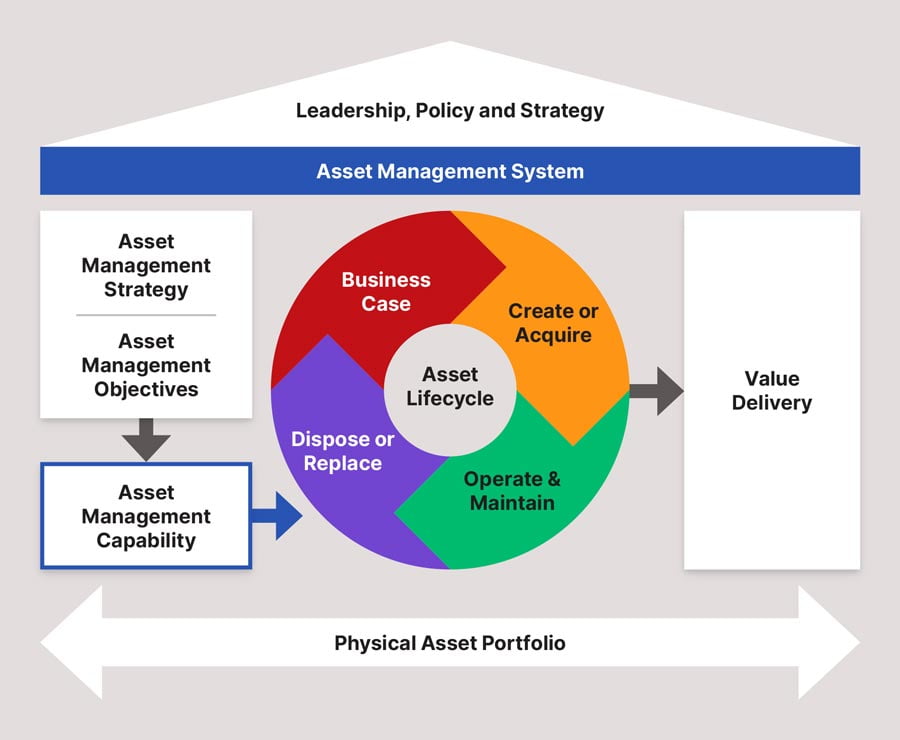
Mental models will help those unfamiliar with particular topics (Think commercially minded executives relating to the benefits of an asset management improvement initiative) retain the initiative in their memory and associate this with particular organisational objectives. Combining a mental model with the commercial benefits of the business case will create the vision for how an investment in asset management will deliver value to the organisation.
Company values and purpose are a core part of any organisations strategy. To further strengthen the association senior executives have with any initiative, giving it a name that can be associated with the companies purpose will further cement the value association of the initiative.
5. Enable your organisation.
How can we further communicate the vision and empower action across the organisation? A common approach utilised in many organisations is to provide a framework that improvements can be based around while also providing another mental model. A framework representing key asset management practices and processes, is an example of one such framework.
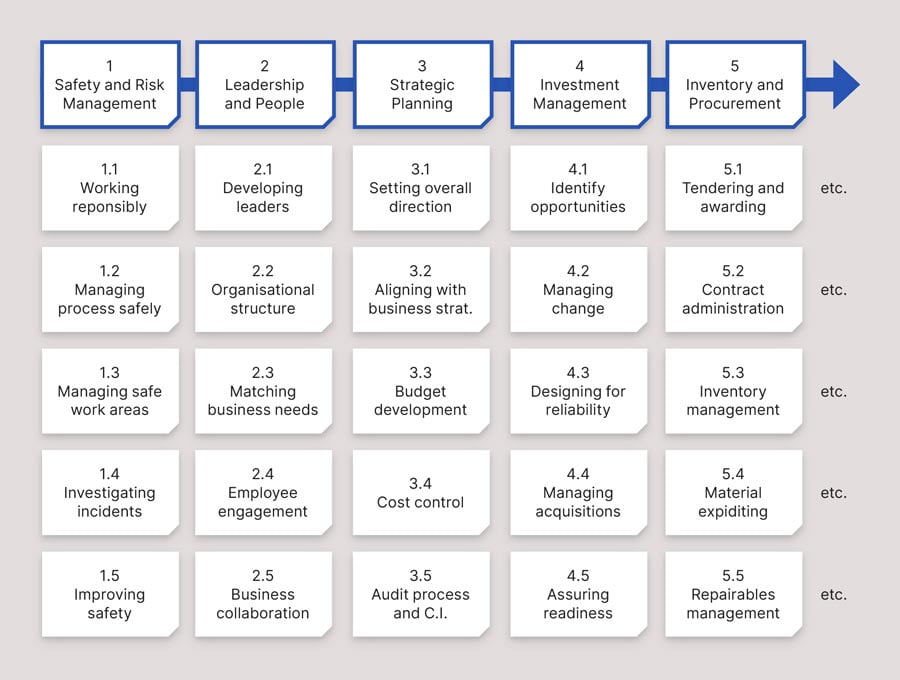
A framework can be utilised to empower the team to action and build on change. The framework can be used to broaden communication across the organisation and make a commitment to improvement. The framework may resemble the assessment undertaken to establish the improvement initiatives and on an ongoing basis it can be used to establish ongoing improvement priorities. To further empower the team they could participate in creating the expectations that underpin the key practices that make up the framework.
6. Sustain the change.
Ensuring change is sustained necessitates those improvements are built upon and continuously improved. This requires governance of the new processes and methodologies to ensure they are regularly assessed and improved. A steering committee, comprising senior leaders and executives is a good way to implement this and ensure ongoing support. A governance model may be represented by something like the below diagram.
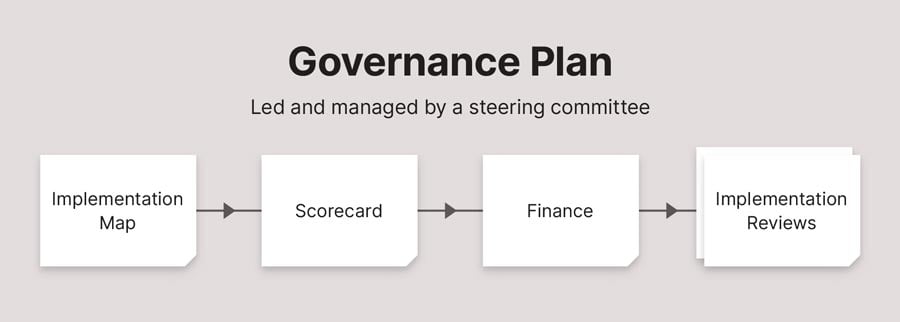
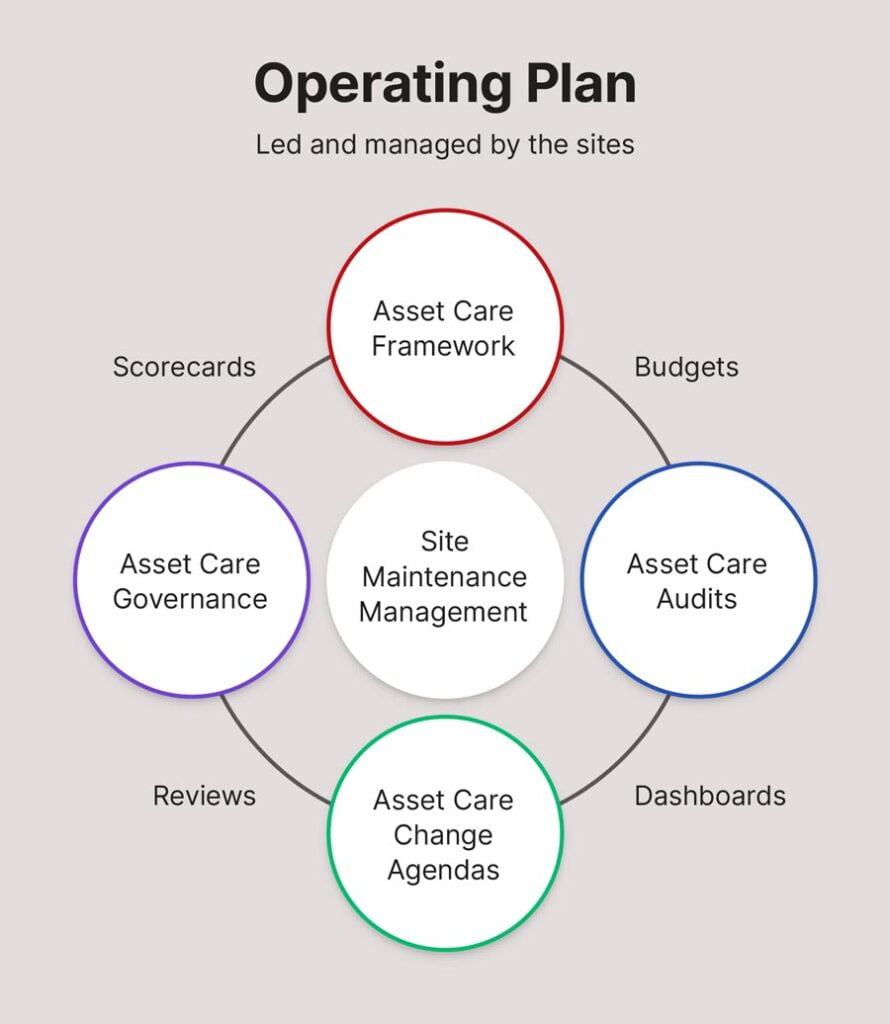
In the above model, the Operating Plan includes the daily asset management activities including operations and maintenance, capital project delivery, health, safety and environmental management, quality management, finance, and budgeting control etc. The operations improvement plans, based around the assessments made from the framework practices above, would reflect improvements across these activities. Improvements could be monitored via dashboards and ongoing reviews of their improvements relative to the assessments and gaps to the desired future state as identified.
The Governance Plan would be led by the steering committee. It would utilise the improvement plan as laid out in the business case to guide decision making and broader level resource allocation based on operations reviews and progress against the implementation plan. The steering committee, containing senior leaders and executives would act as champions of the change.
In summary
Many senior level managers and executives at our organisations struggle to see the link between asset management value and the commercial value aligned to corporate strategy. To appeal to them it is essential that a strategic approach be developed that follows a structured change plan and the value of any initiative both reflects the commercial gains but also the link to company purpose and values.
To make the initiatives stick in the mind of senior executives it is encouraged that mental models be used to make a quick association between the strategic vision and company purpose and values. A framework can be used to further communicate the vision and empower action from those responsible for implementing the asset management change.
Finally, the senior leadership can be encouraged to act as champions of change by having them lead a steering committee responsible for guiding the implementation of the asset management change initiative
Need assistance?
Developing an asset management vision and gaining the support from senior leadership is not always an easy task. Our consultants have the experience and capability to tackle the challenges of asset management improvement and create sustained, managed change for your organisation.
References
- Kotter, John P. (1996). Leading Change. Harvard Business School Press
- https://www.mckinsey.com/business-functions/strategy-and-corporate-finance/our-insights/enduring-ideas-the-7-s-framework
